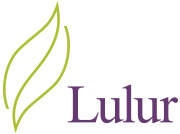Hyperpigmentation: Sun Damage
Summers long gone, but now you’re looking at the summer sun’s leftovers – those pesky brown spots, which makeup barely covers. Often, these brown spots are more prominent on the left side of the face, as it is the side most exposed to sun when we’re driving. And, since most of us spend most of our time driving, we fall victim to hyperpigmentation on the left side of our visage. But, this didn’t just happen yesterday; this is an accumulation of years of sun damage.
Types of Hyperpigmentation
[row class=”row-fluid”]
[col class=”span4″]Lentigines
A condition marked by small brown patches on the skin. Sun damage is the cause. Mostly found on lighter-skinned individuals and the elderly.[/col]
[col class=”span4″]Post-inflammatory (PIH)
Caused by acne, burns, cuts and scrapes or any lesion. PIH is the skin’s protection mechanism by activating the melanocytes. This is more common in darker skins.[/col]
[col class=”span4″]Melasma
Large dark splotches on the face caused by hormonal fluctuations (i.e. pregnancy & birth control pills). This affects all skin types and is the most difficult to treat.[/col]
[/row]
Treatments for Hyperpigmentation
To start, it is essential to understand that you MUST wear sunscreen everyday! Prevention of further sun damage is vital! With the commitment of daily sunscreen, you can have wonderful fading results!
Treatment depends on your Fitzpatrick Classification Scale.
[collapse id=”collapse_36″]
[citem title=”Skin Type I” id=”citem_25″ parent=”collapse_36″]
Skin Color
White; very fair; red or blond hair; blue eyes; freckles.
[divider5][/divider5]
Characteristics
Always burns, never tans.
[/citem]
[citem title=”Skin Type II” id=”citem_75″ parent=”collapse_36″]
Skin Color
White; fair; red or blond hair; blue, hazel, or green eyes.
[divider5][/divider5]
Characteristics
Usually burns, tans with difficulty.
[/citem]
[citem title=”Skin Type III” id=”citem_44″ parent=”collapse_36″]
Skin Color
Cream white; fair with any eye or hair color; very common.
[divider5][/divider5]
Characteristics
Sometimes mild burn, gradually tans.
[/citem]
[citem title=”Skin Type IV” id=”citem_39″ parent=”collapse_36″]
Skin Color
Brown; typical Mediterranean caucasian skin
[divider5][/divider5]
Characteristics
Rarely burns, tans with ease
[/citem]
[citem title=”Skin Type V” id=”citem_99″ parent=”collapse_36″]
Skin Color
Dark Brown; mid-eastern skin types
[divider5][/divider5]
Characteristics
very rarely burns, tans very easily
[/citem]
[citem title=”Skin Type VI” id=”citem_65″ parent=”collapse_36″]
Skin Color
Black
[divider5][/divider5]
Characteristics
Never burns, tans very easily
[/citem]
[/collapse]
Hyperpigmentation Procedures & Topical Formulations
Combinations of nonablative professional procedures allow the topical formulations to fade the Melanocytes, which are located at the basal layer of the epidermis and essential to the efficacy.
[row class=”row-fluid”]
[col class=”span4″]Microdermbrasion
Removes dead skin cells; a great prep to treat melanin.[/col]
[col class=”span4″]Kojic acid
A mild inhibitor of the formation of pigment.[/col]
[col class=”span4″]Hydroxyphenoxy Propionic Acid
Helps inhibit melanin transfer.[/col]
[/row]
[divider10][/divider10]
[row class=”row-fluid”]
[col class=”span4″]Licorice Extract
A natural ingredient Glabridin, proven to prevent UVB induced pigment.[/col]
[col class=”span4″]Ellagic Acid
Helps block excess melanin. Shown in-vivo to reduce dark spots.[/col]
[col class=”span4″]Retinol
A form of Vitamin A, which helps in penetration of skin lighteners.[/col]
[/row]
[divider10][/divider10]
[row class=”row-fluid”]
[col class=”span4″]Lasers
Intense Pulsed Light (IPL): a nonablative laser, effective for treatment of Lentigines and Malasma.[/col]
[col class=”span4″]Advanced Pigment Corrector
A sun-safe combination of advanced pigment lighteners and inhibitors.[/col]
[col class=”span4″]Vitamin C
Has proven to interfere with pigment synthesis at various oxidative steps blocking melanin production.[/col]
[/row]
[divider10][/divider10]
[row class=”row-fluid”]
[col class=”span4″]Mandelic Acid
This AHA is used to treat several conditions (including hyperpigmentation), often combined with salicylic acid for a greater efficacy peel.[/col]
[col class=”span4″]Azelaic Acid
Developed for acne; however, it is beneficial in the treatment of hyperpigmentation because it’s anti inflammatory and great with PIH.[/col]
[col class=”span4″]Peels
Salicylic, Mandelic Alpha Hydroxy Acids (AHA) or Glycolic Acids are perfect for those with lighter complexions and who are dealing with Lentigines.[/col]
[/row]
[divider10][/divider10]
[row class=”row-fluid”]
[col class=”span4″]Hydroquinone
Frequently used, it has been in the market for more than 50 years. OTC [Over-The-Counter] strength (2%) and prescription strength (4% or higher). It is FDA approved, but Hydroquinone’s safety is questionable. It has been banned in the UK; additional studies are being conducted regarding toxicity to humans and a link to Ochronosis and Leukoderma.[/col]
[col class=”span4″][/col]
[col class=”span4″][/col]
[/row]
What To Do About Hyperpigmentation
[lists bullet=”square” type=”style1″]
- Use the best quality sunscreen every morning.
- Wear a wide brim hat.
- Consult with a professional, then either get a series of microdermabrasion, peels or IPL, depending on your pigment issue.
- Use a pigment lightener. My favorite is Skinceuticals Advance Pigment Corrector.
- Protect, protect, protect! Prevention is KEY!
[/lists]
Whatever Hyperpigmentation issue you have, just remember: it takes work and diligenece to fade those spots that have taken years to develop. With a skincare consultation and a treatment plan, you can achieve a pigment spot free future!








